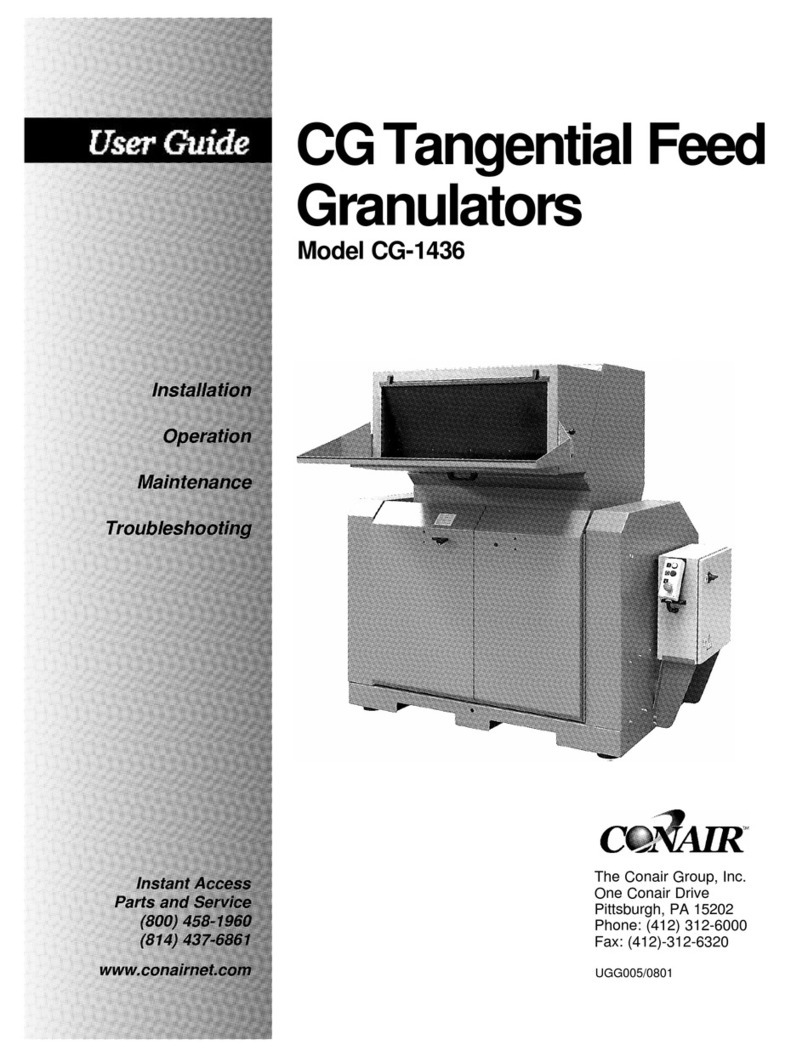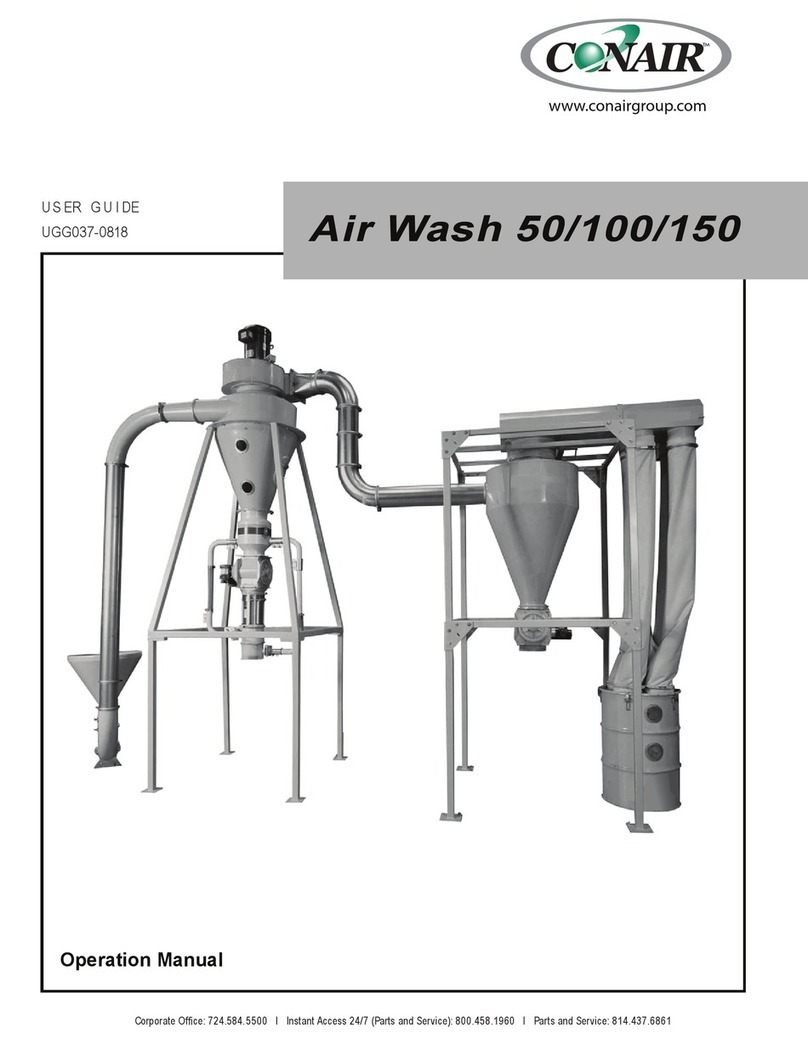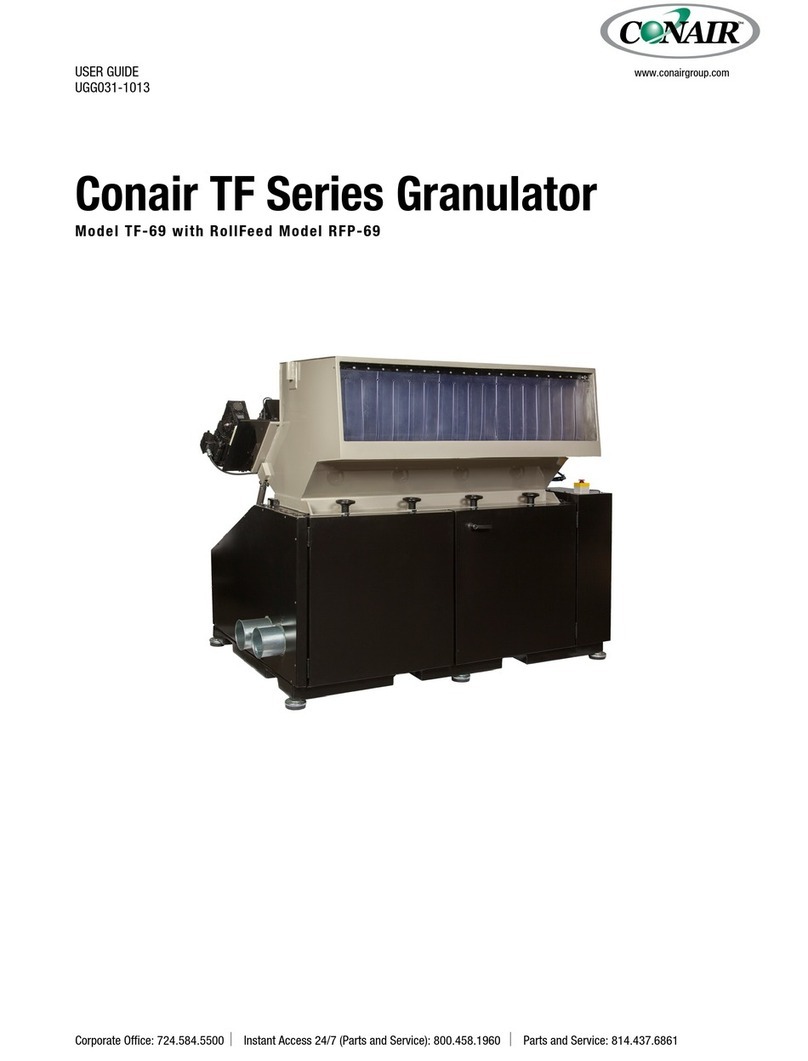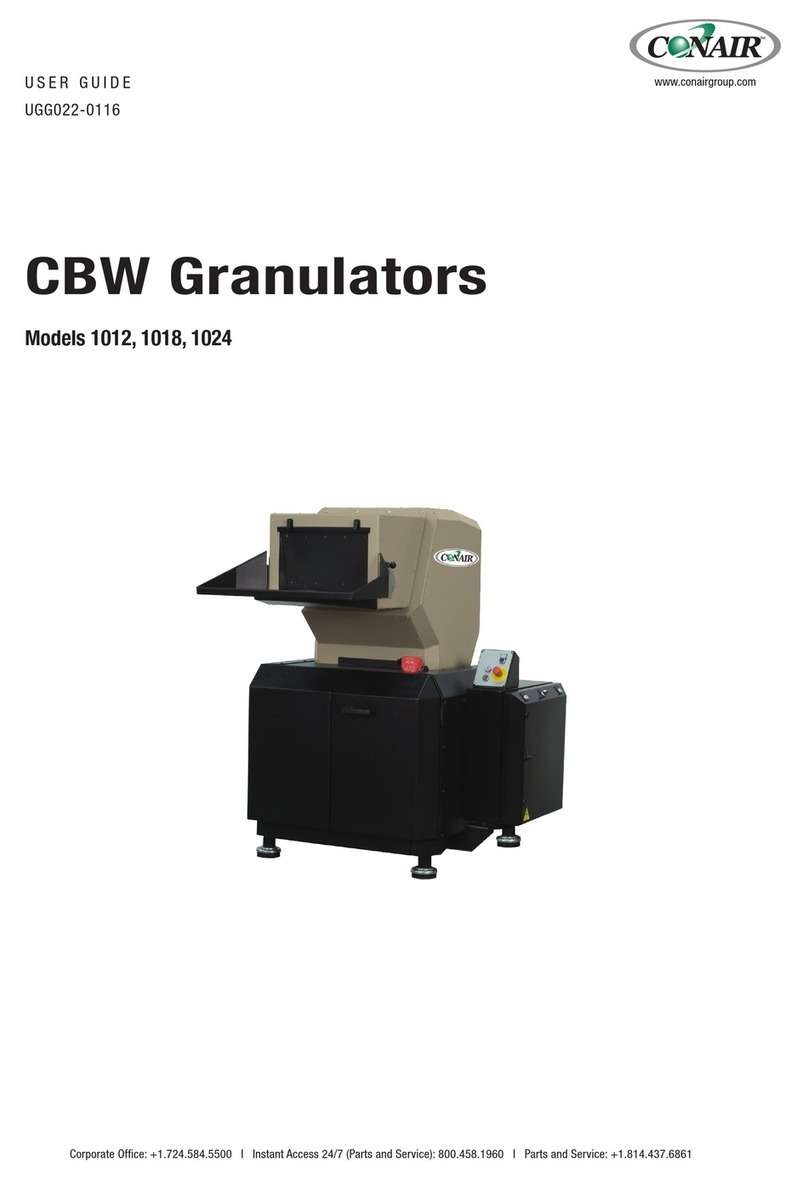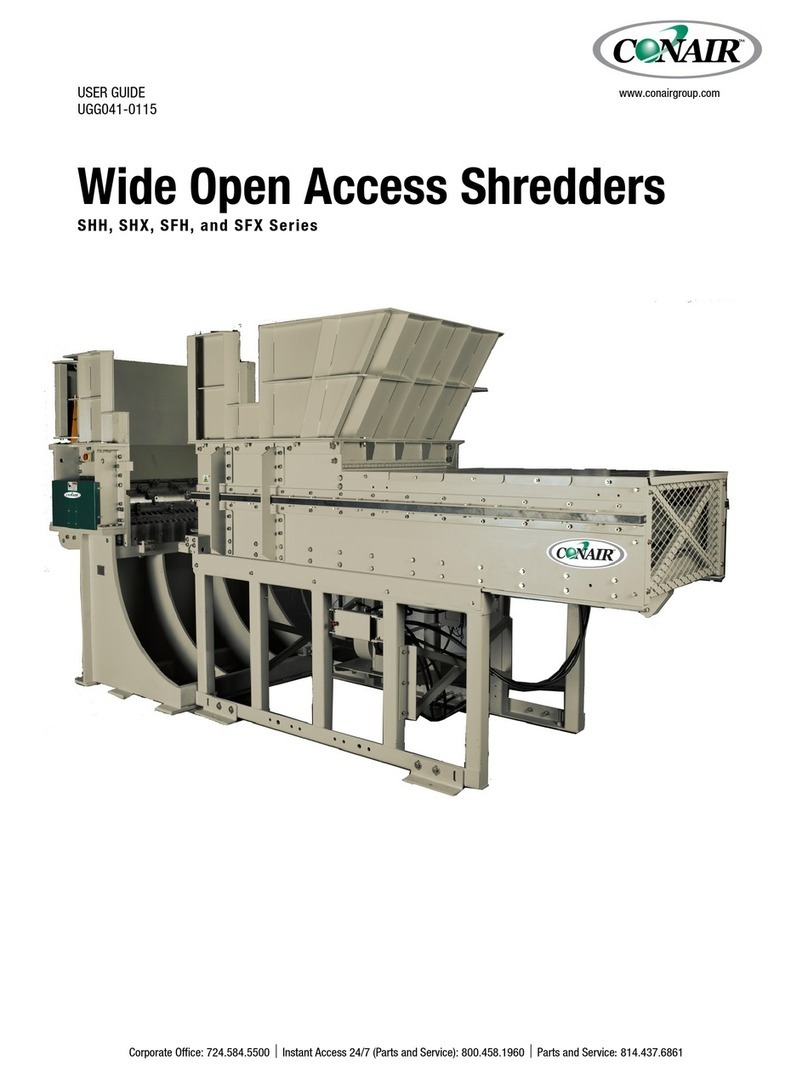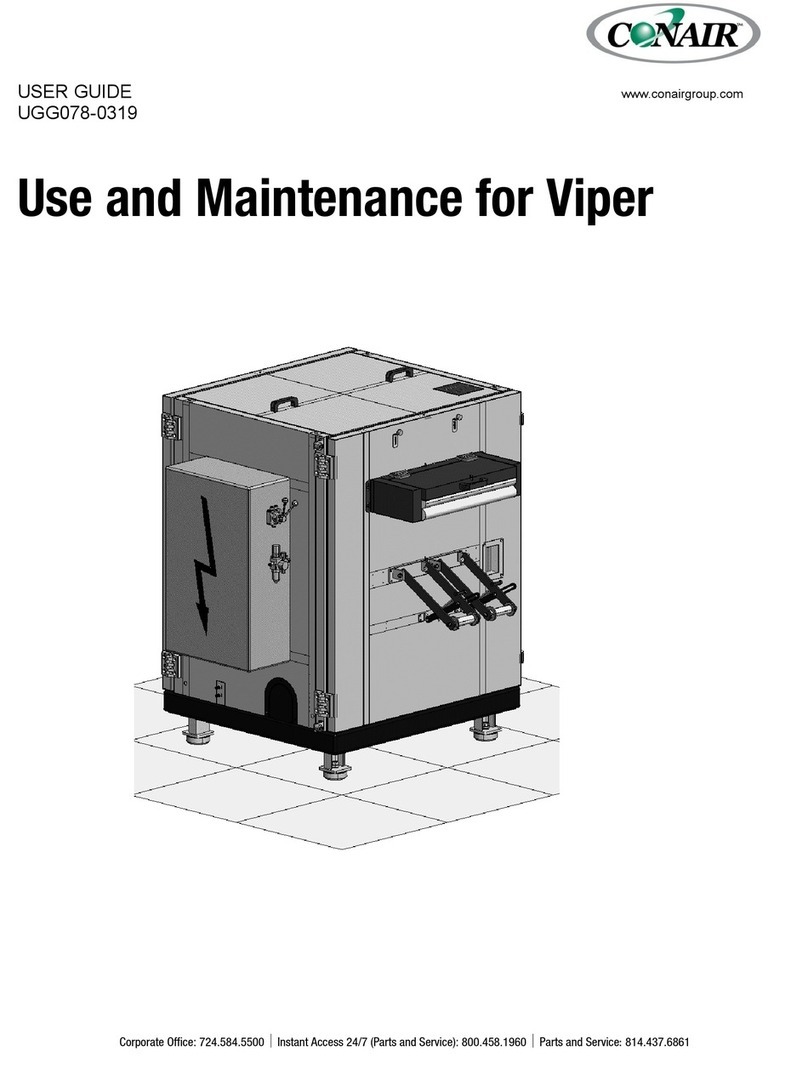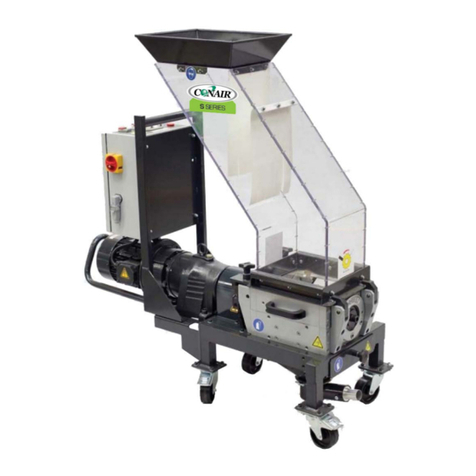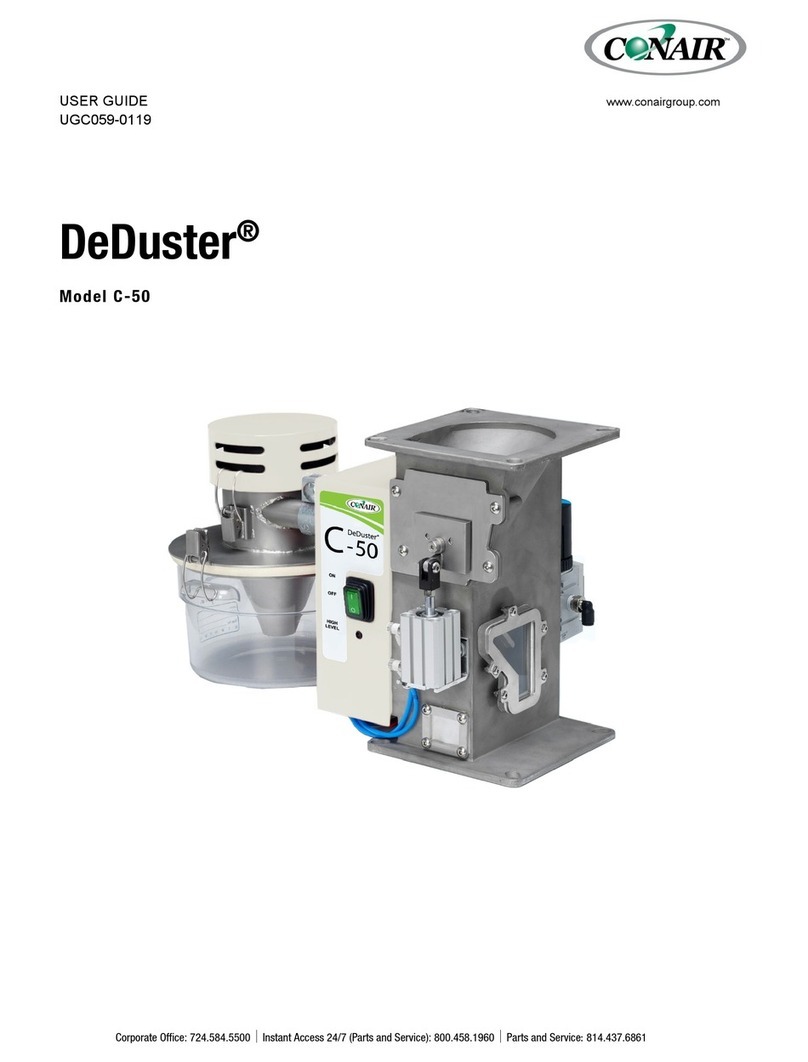
1-4 I Hopper Installation Guide
Positioning and Securing the Drying
Hopper Floor Stand to the Floor
WARNING: You are responsible for the structural integrity of this installation.
CAUTION: Care should be taken while moving the main drying hopper floor
stand and sections to ensure that no damage is done to these assemblies.
IMPORTANT: HAD systems - These are designed to have the HTC placed on
the back of the stand and connected to the hopper inlet, also located on the back of
the stand. The lid can be rotated to allow the standard drop tube to be on the left
or right of the back corner of the stand. If an optional cyclone is configured on the
order, it can be selected to be positoned left or right - it will only go in one way.
Dehumidifying drying systems such as W dryers pull moist air from the drying
hopper and circulate it through a dehumidifying dessicant wheel. These
systems use a HP style heater. This heater is a universal design and it can be
mounted to the tabs on the hopper on either the left or right side of the hopper.
The dryer would also be placed on that same side. If an optional cyclone is added,
it remains specific to the left or right configuration as determined in the purchase
order. The design ensures that the dryer, cyclone and HP should all be on one side
of the hopper.
It is important to fasten the hopper floor stand to a rigid floor structure. This will add
rigidity to the installation and help to prevent accidents during operation and maintenance
of the drying hopper.
Due to the varying size of Conair hoppers, we recommend that you:
•Follow all applicable local building and safety codes;
•Use anchoring techniques and hardware suitable for the size and weight of the drying
hopper; and;
•Do not install any hopper sections until the floor stand is secured to the floor.
1 Make sure the installation location for the hopper meets all provisions for clear-
ances, will support the weight of the fully loaded hopper, and provides space for
the installation of the other Drying System components. See the specifications
and drawings supplied with your system for details.
2 Using a forklift, hoist, or crane, move the floor
stand to its installation location.
3 Following all applicable building and safety
codes, secure the floor stand to the floor.
NOTE: The footpads on the floor stand have existing holes that
can be used for anchoring the floor stand depending on the local
building and safety codes.
NOTE: For Drying Systems
supplied with “small” hoppers,
the floor stand and cone section
may be pre-assembled at the
factory. If your floor stand and
cone section are pre-assembled,
follow the instructions in this
section for mounting the floor
stand then proceed to the
instructions in the “Installing
the hopper door, Upper, and
Lid Sections” section of this
manual.
Tools for installation
UForklift, hoist, or crane;
and
UOther tools as dictated
by the specific installation.
